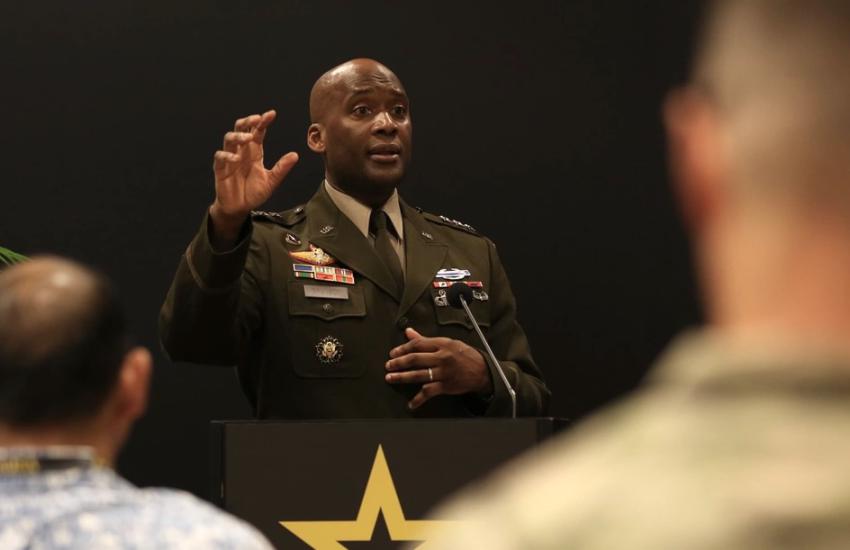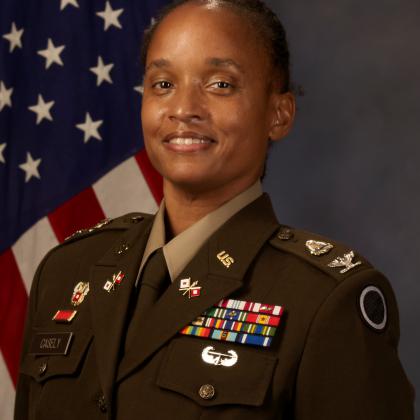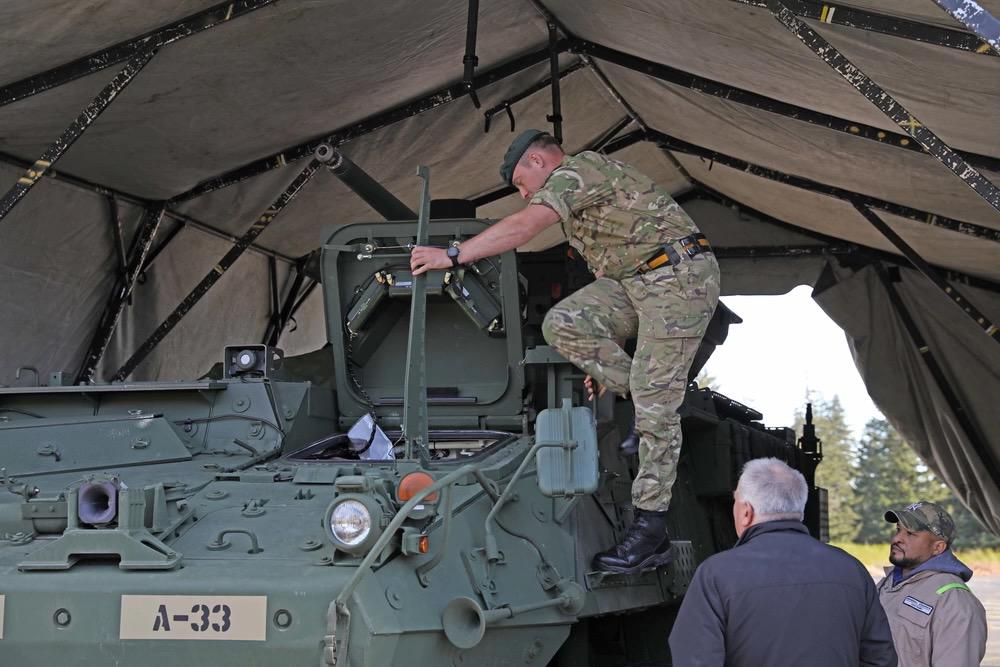The Tipping Point for Army Distributed Command and Control
For more than a year, the U.S. Army’s I Corps has been advancing a key initiative called distributed command and control (C2), allowing the service to communicate and fight with joint and allied partners across the vast Indo-Pacific region. The Corps is putting pieces into place, operationalizing their vision of a nodal-based C2 system, a resilient transport layer, hybrid cloud and data warriors, corps technology leaders report.
I Corps is testing groundbreaking components of distributed C2 during the bilateral Talisman Sabre exercise with Australia, held in their country from July 22 to August 4 with the Five Eyes Nations, along with France, Germany, Indonesia, Japan, Korea, Papua New Guinea, Tonga and other nations participating and observing.
At Talisman Sabre, the service will stand up its first combined joint network operations center, said Col. Rett Burroughs, the incoming chief information officer and G6 of I Corps, who was previously the Cyber Center of Excellence chief of operations, G3/5/7. “We’re also going to have every single service, including the Coast Guard and the Space Force. We will be somewhere around 100 plus soldiers, sailors, airmen, Marines and Guardians in the network operations center, managing networks and services that are really going to span the entire Department of Defense.”
Col. Liz Casely, the outgoing chief information officer and G6 of I Corps, who has been spearheading the implementation of distributed C2 for the last two years, is examining options both inside and outside of the continental United States. The colonel has been working closely with Col. Burroughs to continue the implementation as he takes over the role, and Col. Casely moves to her new role as the executive officer to the Director of the Army Staff.
“With distributed C2, the idea here is that the Corps has to be able to make decisions over vast distances and dispersed nodes,” she explained. “It requires a digitally modernized capability that underpins data distribution. Our function in the G6 is to distribute the data across the relative space and time that is required to make decisions.” She added that it would require cloud outside the continental United States that is extended through modernized edge computing. “The idea here is that it delivers persistent online mission command capabilities across vast distances for the warfighter.”
To support this type of functionality, the desired venue for compute and storage is a multi, hybrid cloud environment that is tactically enabled and focused on the warfighter. I Corps has already made progress in creating several cloud instances in impact level 4 and impact level 6 security environments, Col. Casely reported.
“We are working with multiple cloud providers to include our own private cloud,” Col. Casely said. “And we’ve stood up our own edge devices—that edge node could be whatever you come with. It could be our currently fielded equipment, a [top secret information] server, or it could be a commercially procured piece of equipment that we’re able to order as a compute and store resource and bring it to the theater with us and then use that for our tactical DevSecOps [development security operations] pipelines to go ahead and move information onto those edge computing devices.”
Col. Burroughs emphasized, “It should really be a hardware-agnostic approach, and because it’s software-defined, we’re not reliant upon some big bulky items that we have to wait for the Army to issue. It is almost like a bring your own device but from a service perspective.”

The hybrid aspect of the cloud environments is necessary for distributed operations in the Indo-Pacific “because you don’t know when and where you’ll be disconnected,” Col. Casely said. The leaders, however, have had to evolve existing mission command platforms to work in hybrid cloud applications. They are relying on infrastructure as code capabilities and other solutions to decouple software and hardware, moving away from bulky server stacks and making systems cloud native—a process that they ultimately would like to automate.
“We’ve done a lot of work in this space, modernizing some of the mission command information systems to be cloud native, where we can actually deliver that capability,” she continued. “And as we walk through that process, taking what we have right now in terms of our software packages for all our mission command information systems and making those cloud native, using infrastructure as code to deploy them in this way, it is challenging. It is nascent work at this point.” She noted that the service is able to move the Advanced Field Artillery Tactical Data System from a cloud environment into an edge node, which would represent one of the Corps’ nodes.
Implementation of zero-trust architecture also is necessary in a distributed C2 environment. For that, I Corps is conducting a pilot to help inform the Army what zero trust should be at the tactical and operational levels.
Regarding the transport layer, I Corps has a bold vision to harness commercial transport in the Pacific. However, because of existing policy challenges, the leaders are not far along in implementing their plan. Policies do not allow the Army to extend the Defense Information Systems Network into areas outside the continental United States. The service needs to “touch those cloud resources from any place that we might find ourselves in the Pacific,” Col. Casely explained.
“This really is going to require support from Department of Defense and the Army enterprise,” Col. Casely emphasized. “The idea here is that we want a transport layer that is globally available and regionally agnostic that leverages commercial infrastructure and the in-place Defense Department architecture that is there. There are policies that are in place though, that do not allow us to extend our network into data centers outside of the United States. We’d like to be able to use any commercially available transport to allow us to move our data anywhere globally or keep it in the region to move it from point to point faster without having to traverse back to the hub.”
I Corps has also made a lot of progress in improving the data environment to support distributed C2. The leaders started with a data readiness level assessment—and, not surprisingly, found many manual processes. To provide a fundamental shift to a more data-driven architecture, I Corps then developed the framework for a data warfare program, combining soldiers with academic and industry partners to leverage and grow technical expertise in software development, data engineering and data science.
Presently, I Corps is training its first cohort of seven data warriors using a training pipeline methodology from the Army Software Factory. “We did an internal call for talent inside the Corps to determine how many soldiers had the requisite skills that could be trained to be a part of this first cohort of the data warfare team,” Col. Casely said.
And with the data warrior concept already showing promise, Col. Burroughs is committed to increasing the team. “We have the intention to continue to grow this as Liz hands it off to me,” he said. “We will continue to grow that number probably into the 40s.”
To maintain relevance, a certain percentage of the data warfare team will constantly be in training, he added, with possible rotations to the Software Factory, to the Army Artificial Intelligence Integration Center at Carnegie Mellon University’s Software Institute, or to West Point’s Army Cyber Institute, “where they help us solve bigger I Corps challenges or problems.” The leaders also will rely on those organizations to sculpt how to continue data-related training for data warriors. “And then we’re going to continue to look at how we manage those careers,” Col. Burroughs said.

With distributed C2, the idea here is that the Corps has to be able to make decisions over vast distances and dispersed nodes.
Part of the cohort training preparation involved developing domain-relevant data use cases, such as creating a common operational picture for logistics, a key component to fighting in such a vast region. “How do you maintain awareness of your classified ammunition supply that informs the kill chain, and when and where is it placed in the Pacific,” Col. Casely asked.
In addition, I Corps implemented a data environment that is visible, accessible, understandable, linked, trusted, interoperable and secure, or VAULTIS compliant. “The next step now is to adopt data mesh methodologies, where the domain owner—such as logisticians if it’s a logistics common operational picture—will now appoint a product owner, and they’ll be responsible for the data products that are developed inside of this data mesh. And then we’ll start to expose that data, so folks can query it and make useful decisions off it.”
Ultimately, that kind of data mesh will ride on the globally accessible transport layer, with multiple hybrid cloud environments hosting data, available to soldiers throughout the Pacific. In the meantime, Col. Burroughs will continue to implement more use cases for the data mesh environment. In addition, he plans to appoint a chief data officer. “We need that chief data officer,” he said. “We already have that in the 18th Airborne, and we’re probably going to look the same, but we’re going to have to figure that out.”
Additionally, with the Army making the division the unit of action—instead of brigades—I Corps is examining the implications for distributed C2 and other operational considerations.
“Coming from the Cyber Center of Excellence, we are definitely looking at this from a doctrinal perspective,” Col. Burroughs shared. “What we’re trying to do is to take the complexity out of the brigade and the division as much as possible, so that they can focus on their warfighting mission. Now, what does that look like? Is it moving some services from a brigade up to a division, which would be great, but the brigade still has to have that reach back, has to have that connectivity to the division. And what else can we take off of the division’s plate and move that up to the Corps level?”
And while joint and partner nation interoperability is the standard, that does not always occur at the corps and division level, Col. Casely added. “There are times when brigades have to be able to be interoperable with joint partners and multinational partners,” she said. “Being able to create the flexibility to be able to adapt to that in the Pacific is something that we want and expect to bring back to the Army enterprise. We’ve already started those discussions.”
Talisman Sabre will be a great example of that exploration, Col. Burroughs noted, with a U.S. brigade assigned directly under an Australian division, which is assigned to I Corps. “And one of the learning aspects of this is we want to identify where we actually have legacy ‘swivel chair’ processes,” he said. “For example, if I’m going from a U.S. Army system to a U.S. Air Force system to have the Air Force fly a fires mission, I have to submit a document. Or if we are going to have the Brits do a mission or have the Canadians do it, right now, that’s a human-human interaction. But why do we really need a human in the loop for something so simple as validating that two documents are the exact same thing?”
“Or if we have a U.S. sensor, how does that get to a British shooter? And how is that going to get to an Australian naval shooter, as opposed to a Canadian Air Force shooter?” Col. Burroughs continued. “That’s one of the key ingredients of what we want the learning outcome to be, which will help us either pivot or continue to drive down certain approaches to get to a solution that works, is efficient and makes sense across the joint and combined forces.”

What we’re trying to do is to take the complexity out of the brigade and the division as much as possible, so that they can focus on their warfighting mission.






Comments